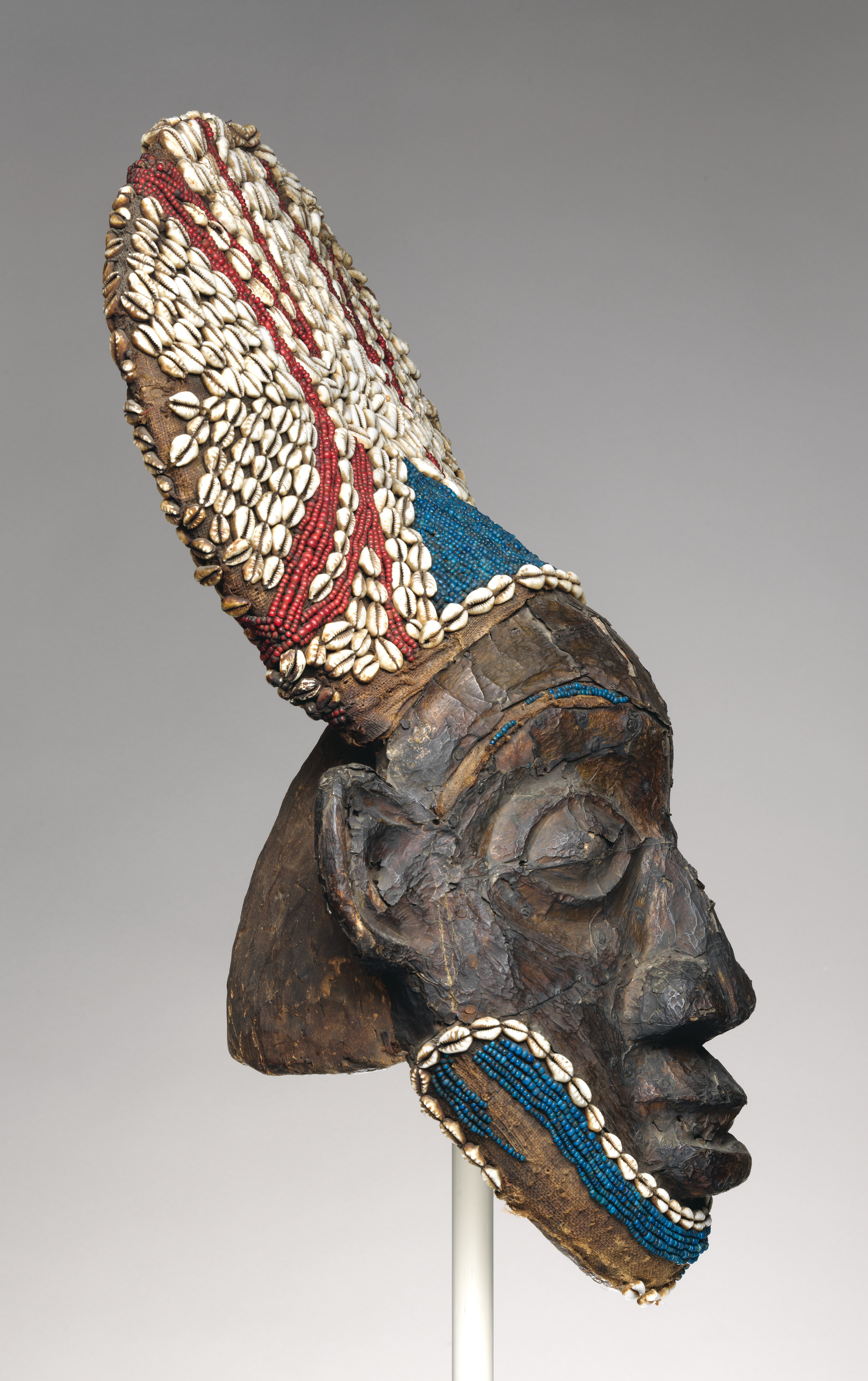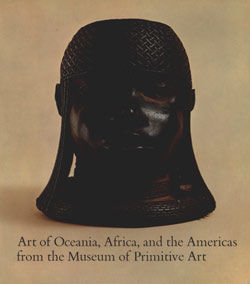Helmet Mask
Not on view
In the socially and politically stratified polities of the Grassfields Kingdoms of Cameroon, the display and ownership of masks are important indicators of privilege and prestige.
"Kwifoyn", a regulatory society whose members derive their authority from the Fon, or king, oversees all levels of criminal justice and functions as an executive branch of government. "Kwifoyn" is organized into ranked lodges; membership requires the payment of prescribed fees commensurate with each lodge's relative status. Among the privileges of membership is patronage of mask forms in celebrations performed in honor of its members. "Kwifoyn" also controls the right to license the replication of mask forms to lineage groups willing to pay a fee.
Masks distinguished by the application of beads, cowrie shells, or brass sheathing are the prerogative of the Fon and function under the joint authority of the palace and regulatory society. This mask, which bears a rich accumulation of these costly and prestigious materials, also depicts the symbolically potent imagery of a stylized spider, associated with wisdom, in the headdress.
Distinguished individuals are honored by the appearance of masks such as this one at funerals and related events. Surrounding the burial and commemoration of titleholders, these celebrations provide occasions for the masks to emerge from their guarded storerooms and to be danced before the entire population. Another occasion for the public display of masks and other prestige arts is a palace-sponsored festivity known as "Nja", the Fon's dance. This annual celebration coincides with the conclusion of the main harvest in late December or early January.
Due to rights restrictions, this image cannot be enlarged, viewed at full screen, or downloaded.
This artwork is meant to be viewed from right to left. Scroll left to view more.




